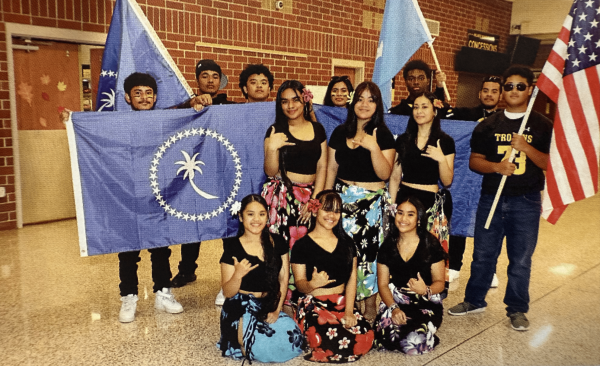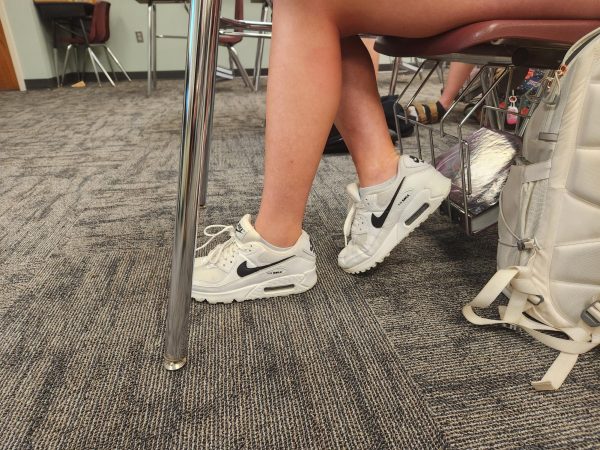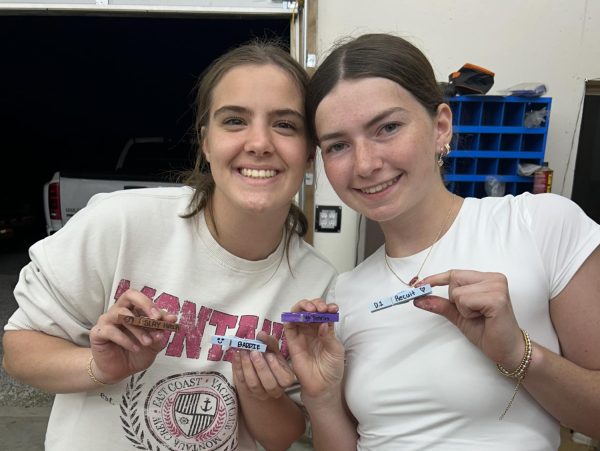Students and Faculty Discuss Dress Code
Who addresses dress-code violations and how?

Dress Code is an issue that schools across America face every day. Some schools are very strict about it while others don’t find it significant to the education of their students. “I think the (AHS) dress code is really fair, it allows students to express themselves, and I like the fact that we don’t stick to uniforms,” said English teacher Emma Bireline.
Although people say the school has a “fair” dress code, some people say that it has been violated since the start of the school year. “It depends on the season. Straps too thin and shorts too short during the warm summer. Guys with tanks cut too low which is not allowed,” said vice-principal Matt Alexander. “It isn’t anything major. The biggest problem is that some students wear inappropriate clothes with logos or pictures on that contain a double meaning or tobacco and alcohol,” he said.
Junior Chamilla Colton thinks the dress code is an issue regardless of the season. “It’s always going to be violated. There’s always going to be that one person who doesn’t follow the dress code.” Colton also is willing to point out when a student is violating the dress code. “No one else is going to point it out unless it’s another teacher. I think teachers will really appreciate it if other students point it out.”
Some students admitted pointing out when a student violates the dress code makes them uncomfortable. “I’m not really in charge. It’s their personal choice,” sophomore Ana Meull said. Likewise Bireline said she feels uncomfortable pointing it out. “I rarely do because it would almost seem as if I’m improperly looking at them. The only time I have ever said anything to a student about what they were wearing was when they were wearing their wrestling singlets,” Bireline said.
On the other hand, Alexander affirmed that he doesn’t hesitate to tell someone they are violating the dress code. “Absolutely. If it’s a female student we have a female address them. Likewise, for males we have a male address them. We don’t always do it that way, but it’s something we try to do,” he said.
Principal McKay said that for the most part she feels comfortable pointing it out. “I try to come at it in a very respectful way. I try not to be in attack mode,” she said.
Art teacher Pat Wiederien said she has no problem pointing out when students aren’t abiding by the handbook. “I don’t want to see your second pair of cheeks,” Wiederien said she has told some girls before. Wiederien also commented that the dress code is a set of rules that everybody should have learned at the beginning of the year.
Students who break the dress code may or may not be held accountable. “When they are caught they are held accountable. The problem with dress code is that during the day we don’t go looking for people who are violating it,” Alexander said.
In the same way, McKay said she holds people accountable when it’s brought to her attention. “When I’m not aware of it or I don’t see it, then I can’t uphold students for it. That’s why there are another 40 adults in the building to address it,” she said.
Sophomore Fatima Gonzalez said students that violate the dress code are usually held accountable. “It happens; it happened to me,” Gonzalez said, who got dress coded for wearing a crop top.
However other people disagree. Bireline doesn’t think students are always held accountable when they violate the dress code.“I think that a lot of teachers don’t want that conflict and so a lot of students will get away with it.”
Dress code rules are on page 28 in the Handbook.







